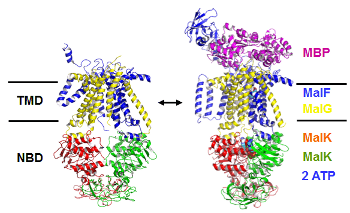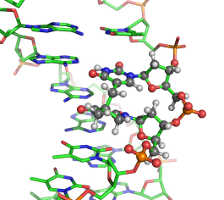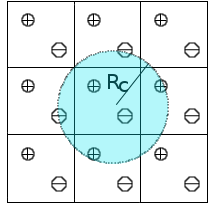Research
Our interests lie at the interface between theoretical/computational chemistry and biophysics. The current research in the lab is directed towards understanding how biomolecules perform their functions via dynamical motions that are encoded in their three dimensional structures. Ongoing projects include computer simulations of ABC-transporters and development of combined quantum mechanical/molecular mechanical (QM/MM) methods.
ABC-transporters
Many essential functions of living cells are performed by nanoscale motors
consisting of protein complexes. The ability of these biomolecular motors to
utilize chemical free energy to perform mechanical work makes them splendid
molecular machines. Among various types of molecular motors, ATP-binding cassette
(ABC) transporters represent a unique family of motor proteins that enable translocations
of various substrates across cell membranes, by harnessing the free energy associated with ATP
binding and hydrolysis. Dysfunctions of ABC-transporters have been linked to a number
of diseases, including cystic fibrosis, the most common fatal hereditary disease in the US.
Over expressions of certain ABC-transporters are also known to contribute to multidrug
resistance of tumor cells after cancer patients receive chemotherapy. Making using multiscale computer simulations,
our project aims at obtaining a deeper understanding of conformational dynamics, enzyme catalysis, as well as the chemomechanical coupling mechanisms under which the chemical free energy is converted into mechanical work in ABC-transporters. Currently, we are focusing on the elucidation of ATP hydrolysis mechanisms in several ABC systems.
DNA damages
In scarce of nutrients, certain bacteria form endospores, which protect bacterial DNAs from various environmental damaging factors, including UV radiation. It is well known that UV radiation can damage DNAs by forming cross-links between adjacent Thymine bases (TT) in a DNA strand. Under regular cellular conditions, such UV-induced damage leads to the formation of cyclobutane pyrimidine dimer (CPD) as the dominant photoproduct. In spores, however, the DNA photoreaction pattern is altered such that a special type of lesion called 5-thyminyl-5-6-dihydrothymine, or commonly known as the spore-photoproduct (SP), becomes the most prevalent form of TT damages. The SP lesions are postulated to be formed in spores in a well-controlled manner such that the bacterial DNAs are "locked" at a chemically inert state until spores progress to the germination phase, during which these lesions are repaired faithfully by a special enzyme called spore-photoproduct lyase (SPL). Despite this widely accepted overall scheme, the precise mechanisms of how SP is promoted from a minor to a major photoproduct in spores as well as how SP lesions are recognized by SPL for repair remain largely unknown. Collaborating with Prof. Lei Li, we have computationally characterized a dinucleotide analog of SP and currently we are simulating short segments of DNA containing the SP lesion.
QM/MM development
We are exploring new approach to include long-range electrostatic interactions in combined quantum mechanical and
molecular mechanical (QM/MM) calculations. Traditionally, long-range electrostatics in molecular
simulations can be treated by lattice sum methods such as the Ewald method, where Coulomb interactions are collected over periodic systems in a manner that contributions from all particles as well as their periodic images are included without any truncation. The Isotropic Periodic Sum (IPS) method provides an efficient alternative to Ewald such that the pairwise interactions are only computed in a local region, where beyond this cutoff distance of the local region, the long range contribution is represented in a mean field fashion by assuming an isotropic distribution of image particles. The IPS method and has been developed and applied to classical systems including biomolecules and ionic systems [1][2][3][4]. We are currently developing computer code to extend the IPS method to treat systems that are described by combined QM/MM potentials.
References
- ↑ Long-Range Lennard-Jones and Electrostatic Interactions in Interfaces: Application of the Isotropic Periodic Sum Method, Jeffery B. Klauda,* Xiongwu Wu, Richard W. Pastor, and Bernard R. Brooks, J. Phys. Chem. B, 2007, 111 (17), pp 4393–4400
- ↑ Using the isotropic periodic sum method to calculate long-range interactions of heterogeneous systems, Wu, Xiongwu,Brooks, Bernard R., J Chem Phys., 2008 October 21; 129(15): 154115
- ↑ Isotropic periodic sum: a method for the calculation of long-range interactions, Wu X, Brooks BR., J Chem Phys.,2005 Jan 22;122(4):44107.
- ↑ Isotropic periodic sum of electrostatic interactions for polar systems, Wu X, Brooks BR.,J Chem Phys. , 2009 Jul 14;131(2):024107


